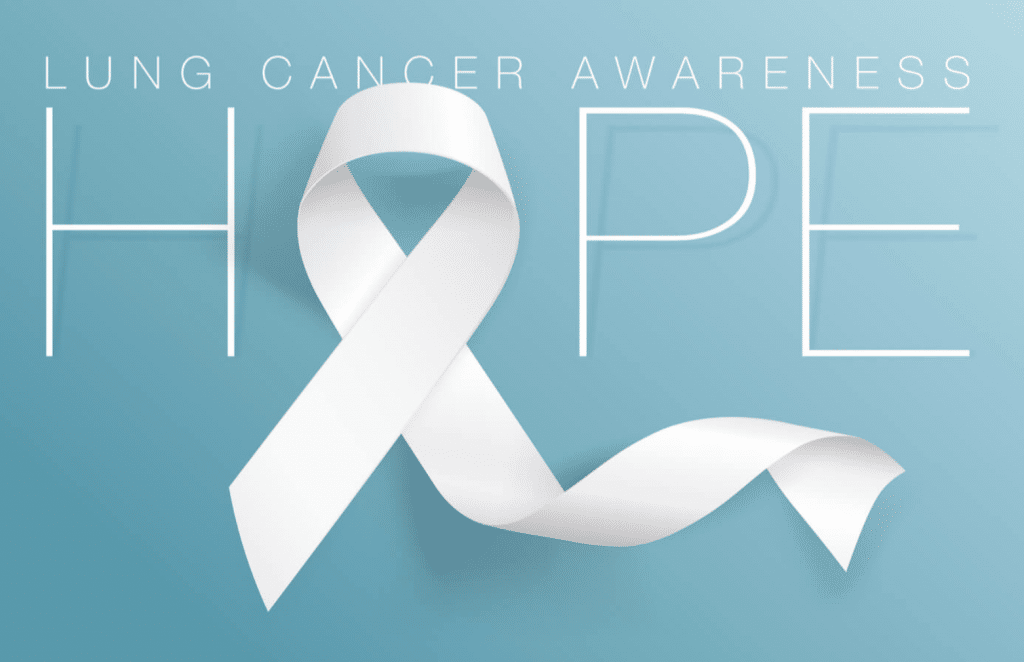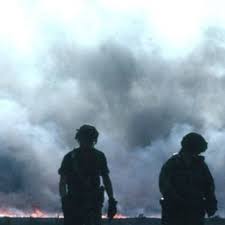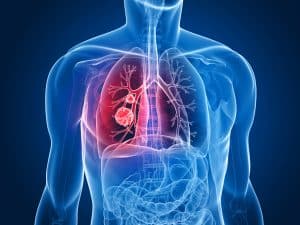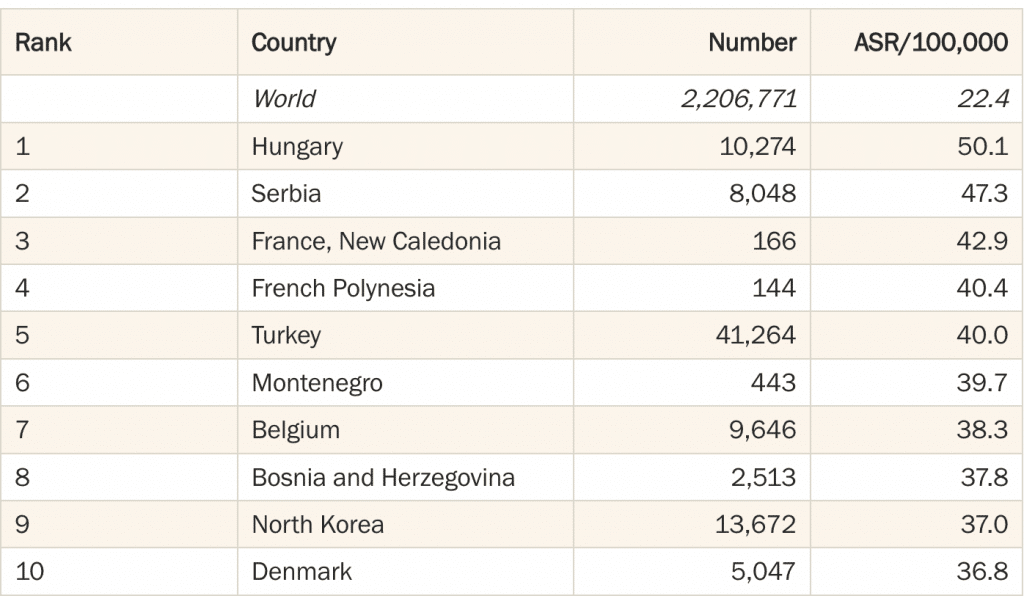November is Lung Cancer Awareness Month

 According to the Lung Cancer Foundation of America, lung cancer is the leading cause of cancer death in the U.S. and the leading cause of cancer-related death among military Veterans. Compared to the general population, military service members are 25 percent more likely to receive a lung cancer diagnosis, with Coast Guard members being most at risk. In addition to carrying a higher risk, the survival rate among veterans has been historically lower than the general population. The causes of lung cancer among military members are largely due to lifestyle habits like smoking and occupational exposure to pollutants.
According to the Lung Cancer Foundation of America, lung cancer is the leading cause of cancer death in the U.S. and the leading cause of cancer-related death among military Veterans. Compared to the general population, military service members are 25 percent more likely to receive a lung cancer diagnosis, with Coast Guard members being most at risk. In addition to carrying a higher risk, the survival rate among veterans has been historically lower than the general population. The causes of lung cancer among military members are largely due to lifestyle habits like smoking and occupational exposure to pollutants.
32 percent of active-duty service members participate in high-risk activities like cigarette smoking compared to 20 percent of civilians. Among soldiers who’ve been deployed, smoking rates are 50 percent higher.

Veterans of nearly every American conflict in the last century (including World War II, the Korean War, the Vietnam War, the Gulf War, and the wars in Iraq and Afghanistan) may have been exposed to cancer-causing particles in camps and overseas. Lung cancer, in particular, is a leading health concern among veterans due to the inhalation and ingestion of a spectrum of carcinogens.
One study of Gulf War veterans revealed that lung cancer was the only statistically significant cancer present among personnel (confirming its heightened risk over other cancers).
Military careers that may have put service members at risk of hazardous exposure include those in industries such as:
- Automotive repair
- Longshore Workers
- Maritime and naval operations
- Petrochemical refinery careers
- Power plant and utility
- Railroad workers
- Steel and iron workers
- Tire and rubber worker manufacturers
Additionally, individuals may have been deployed to a high-risk area (such as locations with lots of open-air debris). Potentially unsafe and known cancer-causing substances include:
- Agent Orange
- Asbestos
- CARC (chemical agent resistant coating) paint
- Depleted uranium
- Infectious diseases of southwest Asia and Afghanistan
- Oil well fires
- Low-level nerve agents at Iraqi facilities
- Perchlorate (rocket fuel)
- PCBs (Polychlorinated biphenyl)
- Pesticides
- Radiation from nuclear weapons testing
- Sand, dust, particulates
- Solvents trichloroethylene (TCE) and perchloroethylene (PCE)

Lung cancer is the 2nd most common cancer worldwide. It is the most common cancer in men and the 2nd most common cancer in women. It is projected that there will be 2.5 million new cases worldwide in 2024.
Countries with The Highest Lung Cancer Rates

Smoking isn’t the only cause of lung cancer. Other known causes of lung cancer include exposure to secondhand smoke, air pollution, radon, petroleum, uranium, arsenic, cadmium, chromium, nikel, particle pollution and asbestos.
Asbestos
Once known for its durability, fire-resistance, and cost-effectiveness, asbestos was once referred to as a “miracle mineral” (pre-1982) and used in many different construction capacities. Primarily, it was used as insulation for pipes, boilers, automobile brake linings, and more before it was discovered to be carcinogenic.
Asbestos is made up of a bundle of fibers that, when disturbed and crumbled into small particles, can be extremely dangerous. If the fibers are expelled into the air, they can become lodged in a person’s lungs, irritate the tissue over time, and eventually cause the cells to mutate and develop into a type of lung cancer. However, asbestos is also linked to mesothelioma diagnoses, a rare disease that affects the lining of the lungs as well as other parts of the body. Mesothelioma can sometimes be misdiagnosed as lung cancer since it is not as common.
Radon
The second leading cause of lung cancer is exposure to a poisonous, naturally occurring, radioactive gas called radon. What makes the gas so dangerous is its lack of color and odor. Radon causes approximately 21,000 lung cancer deaths every year. Typically, the gas oozes out of the soil and into the air. Usually, bits of radon float throughout the environment in many places outside. However, it only becomes dangerous in concentrated environments, such as inside houses and other residences.
Uranium
Another mineral, uranium ore has been used as an abundant source of concentrated energy for over 60 years. Uranium naturally occurs in rocks and seawater. Generally, it is mined and sent to processing plants to utilize for nuclear energy. The energy this method supplies adds up to about 11 percent of the world’s annual electricity. It is also used to power nuclear plants, reactors, in radioisotopes, and as a source of fuel for the military.
Since this mineral is radioactive, exposure to high concentrations of enriched uranium for extended periods can cause healthy cells to mutate and begin multiplying excessively. This process has been known to cause lung cancer as well as other types of cancer. Fortunately, depleted or naturally occurring uranium has never specifically caused any human cancer.
Arsenic
A natural element that can be found in soil, rocks, water, air, plants, and animals, arsenic is abundant in the environment. Typically, humans take in low levels of arsenic when we breathe, drink water, and eat food. Though, this exposure is less dangerous. When people breathe in arsenic, it could put them at risk to develop lung cancer.
Before 1985, arsenic was used in several human-made products – primarily pesticides and herbicides. This fact put those who transported, applied, or worked around these toxic products at high risk for exposure to dangerous levels of arsenic. Those spending a lot of time around former agricultural sources of arsenic, older industrial buildings, or coal processing plants are also at high risk of dangerous arsenic exposure.
Cadmium
Classified as a carcinogen in 1993, cadmium is another naturally occurring element that can be found in small amounts in air, water, soil, and food. All soils and rocks, including fertilizers made from coal and minerals, host cadmium. Cadmium’s extracted when producing zinc, lead, and copper. It’s also been used to manufacture batteries, pigments, metal coatings, and plastics.
Those who work in factories where cadmium products are made or those who ingest cadmium products such as secondhand tobacco smoke and cadmium-contaminated foods are more likely to have a dangerous level of exposure to the element. Cadmium exposure has been known to be among the causes of lung cancer as well as prostate, pancreatic, and kidney cancer.
Chromium
There are two types of chromium, trivalent chromium (known as Cr III) and hexavalent chromium (known as Cr VI). This element is most toxic in its Cr VI state, primarily targeting the respiratory tract, but Cr III can be an essential element in humans.
Chromium was popular in industrial capacities and is used primarily for making steel or other alloys. It’s also used in the manufacture of dyes, pigments, leather, wood preservation, and chrome plating.
Nickel
This carcinogenic element can be mined from the earth’s crust. Commonly, it is combined with other elements to form nickel compounds that can have a multitude of industrial uses. Most nickel is used in metal alloys because of its corrosion- and heat-resistance, durability, and strength.
In factories and plants where nickel is produced, toxic exposure to the substance is likely. This includes mining, smelting, welding, casting, and grinding. Nickel can cause lung cancer when its particles are inhaled through fumes or by skin contact
Petroleum
It’s in our gasoline and we commonly use it in tires, refrigerators, life jackets, and anesthetics. Petroleum, also known as petrolatum, is crude oil that’s also a fossil fuel. Much like other fossil fuels such as coal, petroleum is made from the remains of ancient marine organisms. These organisms included ocean plants, algae, and bacteria. When plants and animals sank to the seafloor at the end of their lifecycle, their remains (fossils) developed into carbon-rich substances after millions of years of extreme heat and the pressure from being crushed by tons of layers of sediment and plant debris. Today, petroleum is found in massive underground reservoirs where ancient seas once thrived.
Petroleum starts to get dicey when it’s burned for energy and, then, releases high amounts of toxic gases, such as carbon dioxide. Prolonged inhalation or exposure to petroleum products has been associated with lung disease and cancers.
Particle Pollution
Another cause of lung cancer in non-smokers is particle pollution or smog. Think dirty truck exhausts and smoke from power plants and chimneys. More specifically, particle pollution occurs when a mix of small, toxic liquid particles end up in the air we breathe. Usually too small to see, prolonged inhalation of the air in toxic environments can shorten your life and even cause lung cancer. First responders like firefighters encounter particle pollution and smog a lot, as they are the first ones on the scene. California is the state with the highest levels of particle pollution in the nation, with Pennsylvania coming in a close second.
Approximately 1 in 4 lung cancer patients will be diagnosed in the earliest stage, when the disease is most treatable the 5-year survival rate is much higher (60%).
There isn’t just one lung cancer – every lung cancer is unique. Lung cancer is a group of diseases defined by the genetic makeup of the lung cancer tumors.
During the past 39 years, the lung cancer death rate has fallen 29% among men while increasing 102% among women. There is currently no cure for lung cancer, however new research is making it possible for people to live with their lung cancer, managing it like a chronic disease.
According to the World Cancer Research Foundation,
There is some evidence that:
- consuming red meat, processed meat and alcoholic drinks might increase the risk of lung cancer
- in current smokers and former smokers, consuming vegetables and fruit might decrease the risk of lung cancer
- consuming foods containing retinol, beta-carotene or carotenoids might decrease the risk of lung cancer
- in current smokers, consuming foods containing vitamin C might decrease the risk of lung cancer
- in people who have never smoked, consuming foods containing isoflavones (constituent of plants with oestrogen-like properties) might decrease the risk of lung cancer
- being physically active might decrease the risk of lung cancer
Resources:
1. https://www.wcrf.org/cancer-trends/lung-cancer-statistics/#:~:text=lung%20cancer%20data-,Lung%20cancer%20is%20the%202nd%20most%20common%20cancer%20worldwide.,of%20lung%20cancer%20in%202020.
2. https://lcfamerica.org/lung-cancer-info/
3. https://www.lungcancercenter.com/lung-cancer/
